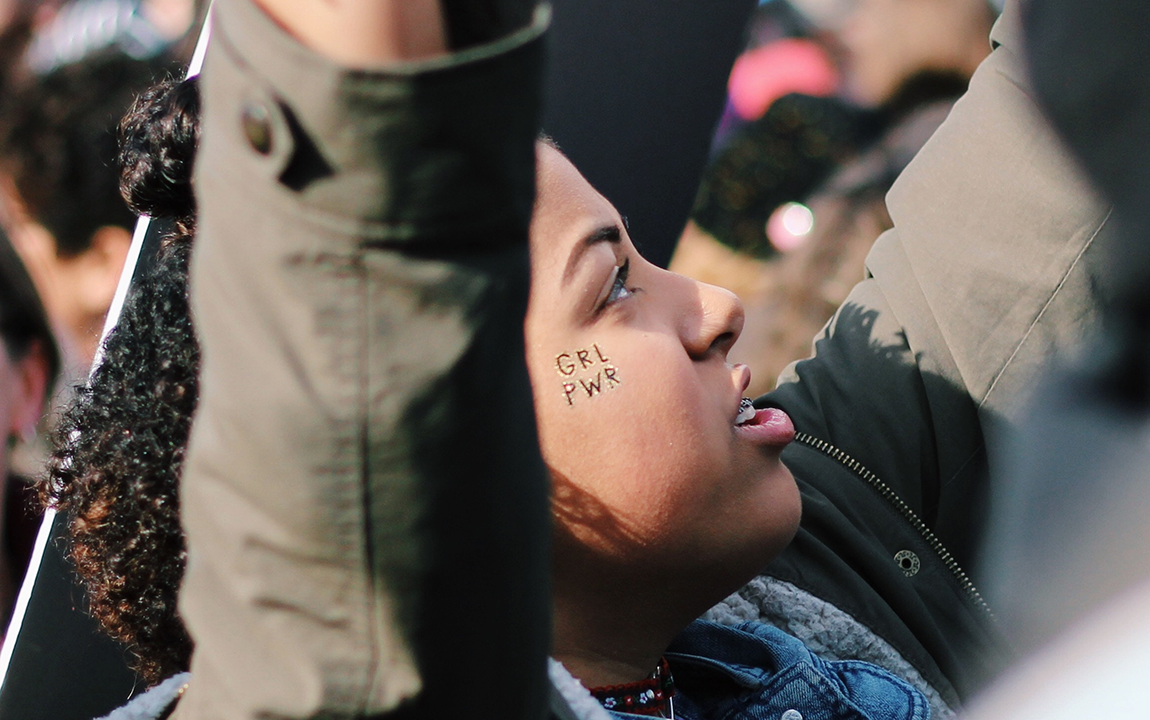
A few years ago, I was tasked with creating a women’s studies course. It was the first of its kind in my district. Never mind that this was only my second year of teaching, and I was literally just figuring out how to do my grades! After much trial and error, research, and project planning, the course was ready to go, or so I thought.
For the next three years my students and I delved into topics that were relevant to them and often pushed my own understanding. We covered everything from equal pay, to women’s health, to gender stereotypes and international women’s issues. As an educator I had to re-immerse myself back in my women’s studies course from undergrad and think about how to make this relatable to a high school audience.
We began the course by exploring the historical waves of feminism; we read “Ain’t I a woman?” “Baby X”, “I want a wife” and “Feminine Mystique.” Throughout the year, we moved into different issues women face. We watched videos on colorism and intersectionality, and brought in survivors of domestic violence to discuss their experiences, after which my students planned a domestic violence awareness event to educate their peers on dating abuse. Documentaries like Miss Representation and Good Hair helped set the stage for debunking stereotypes about women. Students were surprised by how many of the stereotypes they believed and where they originated in their own socialization. Books like Half the Sky ignited passion in students to move to action for issues such as menstruation stigma.
Our culminating project was a community show and forum called “Pass the Mic,” where students hosted a debate on the role of women in hip hop followed by performances paying tribute to women in the music industry. The event was a major success, with over 200 attendees each year. Students planned and executed everything from contacting forum guests, to designing the staging and promotional materials, to managing the show itself.
Designing to the Edges: Women’s History Projects
Creating and teaching this course was one of the highlights of my teaching career, as it taught me about “designing to the edges”—creating content while keeping in mind those furthest from opportunity. While we were covering these topics because of the nature of the course, I wondered why every course didn’t include women’s history. This women’s history month, I think about how the narratives of women, particularly women of color are often left out of the curriculum.
PBL projects can be the way to reintroduce those concepts. Current events surrounding women’s rights can present a very authentic entry point. I was often inspired to create a unit based on issues happening in local and national news. For example, a discussion on raising the minimum wage and its origins in the progressive era can also touch on how today tipped workers are mostly women, who are impacted greatly by such policies. In STEM, research on the works of notable yet oft-forgotten female scientists and mathematicians can be brought to the forefront, connected to major tech corporations’ current efforts to figure out how to attract and retain more women. Additionally, as many companies are updating their maternity and paternity leave policies to meet the demands of expecting families, students can explore how other countries tackle this issue. The wage gap which still exists in many industries can be viewed from a women’s rights lens, highlighting the U.S. women’s soccer team and WNBA as major leaders in this fight.
For those interested in exploring this in their project design, I suggest partnering with local women’s organizations to find speakers. Also, utilize online resources (I have linked a few below) to encourage students to analyze and challenge laws such as wage discrimination, maternity leave, and domestic violence.
Including the voices of women is important work that has the capacity to reach beyond the classroom. This year’s Oscar winner for best documentary short, “Period. End of Sentence” began as an initiative led by a high school English teacher in Oakwood, California. The film is about students who helped women in India create their own pads to increase their access to education. Projects that give voice and perspective to the current and historical issues women and girls face help students learn how far we still have to go to achieve gender equality.
Resources:
- International Women’s Issues: http://www.halftheskymovement.org
- Dating Abuse: https://www.breakthecycle.org/loveisnotabuse
- Women and minimum wage: https://www.nelp.org
- The Pad Project: https://www.thepadproject.org
- Miss Representation: http://therepresentationproject.org/film/miss-representation-film/
